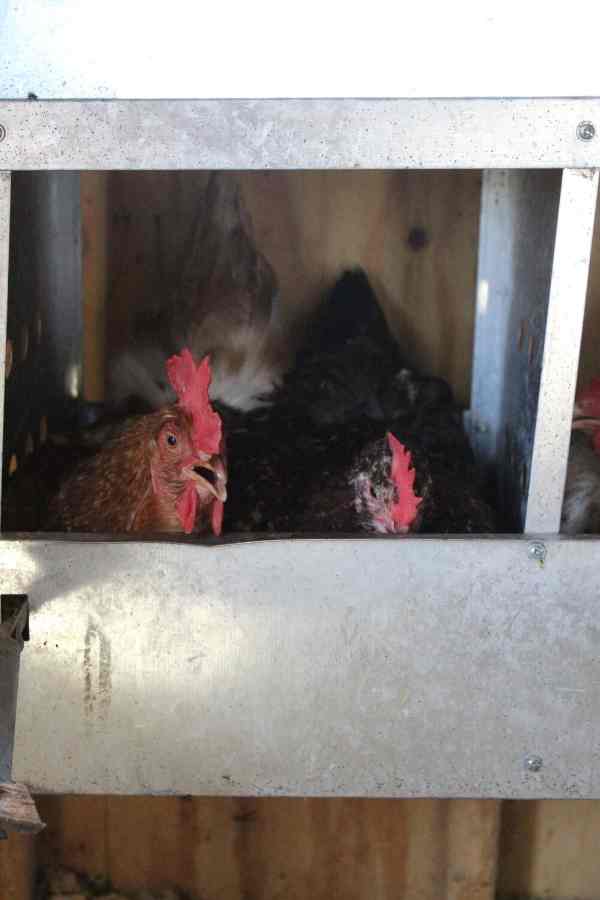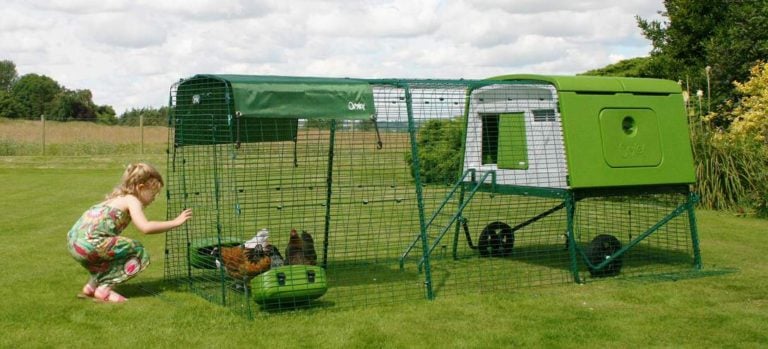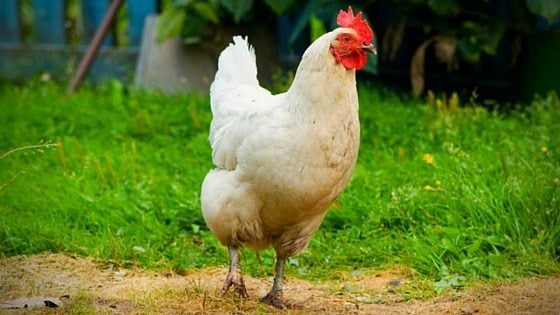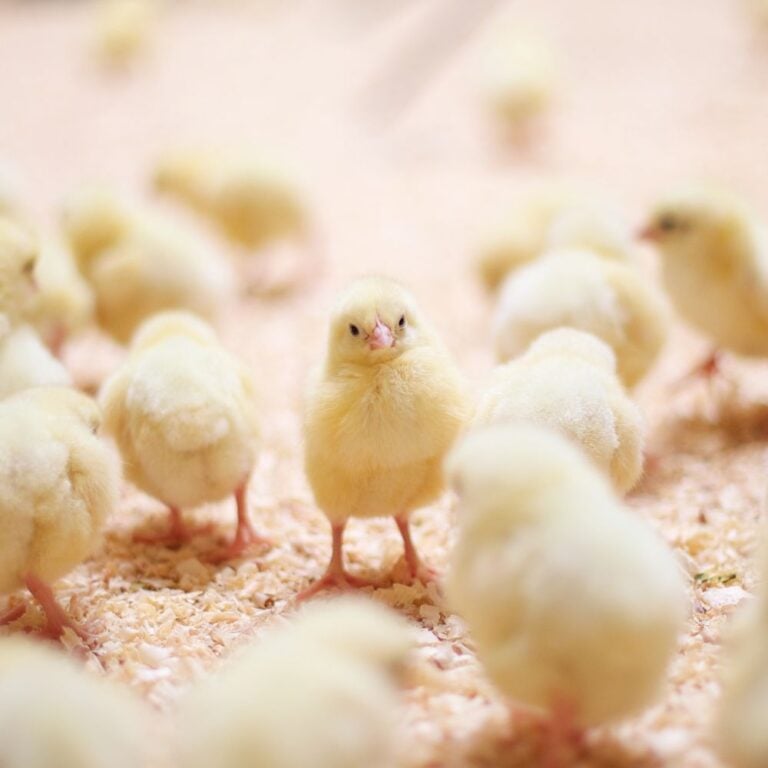Is your flock refusing to lay eggs in their nesting boxes? Want to spoil your hens by creating a nesting area that’s beautiful and inviting?
I’ll show you 7 most common reasons why chickens refuse to use their nesting boxes, what to do about it, and how to provide the best nesting area possible.
It can be heartbreaking and confusing when your flock lays their eggs on the ground instead of the carefully designed nesting boxes you provide. Nobody wants dirty, poop-crusted eggs! It’s also disappointing when they start hiding their eggs or stop laying them completely. You spend so much time and money setting up their nesting area, after all! It can be really, really frustrating.
Getting your flock to consistently use their boxes can take some trial and error, but it CAN be done. It all starts with providing an attractive and inviting nesting area. With the easy ideas below, you can discover if you’re making some very common mistakes in your own coop.
Let’s cover the common reasons why your chickens might avoid laying eggs in a nesting box.

Common Reasons Chickens Won’t Use Nesting Boxes
- Too much noise & commotion
- There are mites in the nesting area
- The boxes are dirty and smelly
- The bedding is wrong
- Nesting boxes are too high or too low
- Your hens don’t like the material your nesting boxes are made out of
- They don’t have enough nesting boxes
Chickens Like Their Privacy
It’s true. Even though they’re incredibly social animals, chickens like privacy when doing their most intimate business – laying eggs. Why is this? When a hen lays an egg, it can take up to 1 hour for the egg to actually emerge from her vent. She must stay still and quiet the entire time. In the last few moments, before the egg is laid, she might even have to strain a little. As you can imagine, it’s not a time when she wants roosters, other hens, or humans bothering her!
If you locate your flock’s nesting boxes in a busy area, your hens might avoid it. Similarly, if they’re easily accessible to roosters or bossy alpha hens, it’s likely too stressful for a quieter hen. In these cases, she will find her own, more suitable, area.
Make sure your flock’s nesting boxes are inside the coop. Choose a corner where there are no feeders, waterers, dust bathing areas, swings, or anything else that can attract another chicken to the area. Dedicate that nesting area just for laying eggs. Your hens will appreciate it!
Are Mites A Problem?
We all know what mites are. But did you know they can hide in nesting boxes? Not only that, they can turn a cozy, daydreamy nesting box into a nightmare. Eventually, mites can even cause death. If your flock’s nesting boxes are infested, your hens might avoid them altogether.
So, how do you know if there are mites? Personally, I automatically assume mites will creep in, especially if I don’t do preventative maintenance. Regularly cleaning nesting areas helps. Spraying the area down with a cleaning solution and scrubbing it regularly is a simple but effective strategy. An all-natural cleaner made from citrus is a cost-effective option.
But don’t stop there. Cleaning prevents existing mites from making the boxes home, but it doesn’t stop the invasion completely. Do double duty by adding herbs traditionally used to prevent external parasites to your nesting area. Herbs are a cost-effective and all-natural solution that can discourage mites from returning.
Mites can cause anemia, which usually requires a visit to the vet to diagnose and cure. So preventing them is cheaper than a big vet bill. Always make sure to source your blends from a reliable source. We use this herb blend because it’s created specifically for chickens.
Also, it’s worth mentioning that chicken lice can cause just as much trouble and herbs will also work on those life suckers.

Does It Smell Bad?
Finding eggs on your coop floor? Not always cleaning your nesting boxes when they need it? Then your hens are likely avoiding the dirty, smelly areas.
Who wants to lay in a dirty, stinky bed? Nobody. And your hens aren’t any different. Lots of things happen in nesting areas that humans can’t see. As the box gets dirtier and dirtier, problems compound. Eggs break. A hen drops manure or urine. Ammonia builds up. Their eyes start stinging. Feathers get stuck everywhere. It’s unpleasant.
The simplest way to avoid this is to clean the nesting boxes weekly. Remove all bedding, and do a wipe down. Then, add clean bedding and herbs. For a more detailed explanation, you can read this article to learn how to clean a coop.
It’s also important to clean any unusual messes as quickly as possible. For example, if an egg breaks, don’t allow the smell to fester and the egg to dry. It’ll be hard to get the stench out of your flock’s feathers. You’ll spend even more time cleaning. You’ll end up with stinky chickens in addition to no eggs.
You want to avoid wetness, stickiness, and bad smells. Clean the box immediately, and replace any bedding and herbs.
Which brings us to an important point: great smelling herbs are an easy way to keep your flock using their nesting boxes. Chickens are animals, and smells are very important. It’s how they understand their surroundings. They use scent to determine if an area is safe or not. We’ve found that adding herbs and dried flowers creates a more inviting area that smells better. Instead of repelling our chickens, the herbs invite our flock to use their nesting boxes.
We like this product, which is full of fragrant, healthy herbs and flowers like calendula, lavender, chamomile, rose petals, and more. The herbs are all healthy for chickens, and other buyers report the herbs to attract their chickens to nesting boxes better than just bedding alone.

Is The Bedding Wrong?
Have you always used a certain type of bedding? Or, are you not using bedding at all? Chickens are sensitive, like a lot of prey animals. Bedding that doesn’t suit them – for whatever reason – can stop them from using their nesting boxes. If your flock won’t use your nesting boxes, try out different bedding options. Straw and pine shavings are two popular options.
Adding herbs to bedding can also help attract your hens to the nesting boxes. In our coop, we use pine shavings from Tractor Supply and Best Eggs Ever! Nesting Box Herbs. Our flock enjoys them, and our hens always give us the maximum amount of eggs.
Adding ENOUGH bedding is important, also. What would you rather sit on: a thin cushion or a nice, fluffy pillow? Personally, I’d opt for the fluffy pillow. I’m sure your chickens feel the same.
When they lay eggs, the hens tuck their legs under them and bed down. Sitting on hard, cold metal or rough wood hurts the shank of their legs and their toes. If their coop floor offers nice, fluffy shavings, they’ll likely opt to lay their eggs on the softer area. Add at least 1 inch of shavings per nesting box, and top it with ½ cup of herbs and flowers.
Adding extra bedding and herbs can cost a bit extra, but it’s better than spending money on feed with no eggs to show for it! Your hens will show their appreciation by giving you lovely butt nuggets!
Whatever bedding you choose, just make sure to stay away from cedar shavings. While they smell good, some studies have shown that the aroma can have a long-term negative impact on your flock’s health.
Are The Boxes Too High Or Too Low?
It’s true, sometimes chickens can be picky. While we have a lot of nesting options in our coop, for whatever reason, our flock refuses to use any that are placed too high. There’s a Goldilocks zone. If a new nesting box isn’t within those parameters, they ignore it.
For example, a company sent us some nesting boxes to test out. The product looked perfect. But we committed a cardinal sin (at least a sin in the eyes of our chickens). We placed the boxes higher than our other nesting boxes. The hens promptly ignored them. As soon as we lowered the boxes, our chickens used them.
It can go the opposite way, too. Sometimes nesting boxes are TOO close to the ground, and hens avoid them. This happens especially if the nesting boxes are directly on the ground. There’s a lot less privacy and the potential for opportunistic predators to infest the area to steal eggs. Bossy hens, roosters, rats, snakes, skunks, or other predators can easily enter the box. Because it’s not safe, chickens then lay their eggs in more hidden areas.
If everything else in your coop seems okay, then perhaps the height of your boxes is the problem. Try lowering them or raising them to see how your flock reacts. It can be a chore, but so is an Easter egg hunt every day. In the long run, you’ll be happier with the results by finding your flock’s “ Goldilocks Zone.”
Choose Materials Your Hens Prefer
When we purchased our new coop, I had visions of easily removable plastic nesting boxes. I wanted to power wash them weekly to keep them squeaky clean. My flock had other plans. To this day, they refuse to use plastic nesting boxes. Instead, they’re fans of stainless steel. I’m still scratching my head, but that’s just the way it is.
Nesting boxes come in all shapes and sizes. They can be made of wood, stainless steel, plastic, wicker, and any other material you can imagine. Like people, chickens have their own preferences. This is especially true if you have an opinionated alpha hen. She can influence an entire flock. And sometimes, chickens just prefer one type of nesting box over another.
For example, if your nesting boxes are made of cedar, it’s possible your hens want to avoid inhaling harmful fumes. If the boxes are plastic, maybe they’re just too slippery. If it’s winter, maybe the stainless steel gets too cold. In the summer, maybe it’s too warm. Maybe it’s too sharp or too hard, and it hurts them.
Examine your own flock’s habits. Observe them as they interact with the nesting boxes. From there, you can figure out if they’re avoiding their boxes because they don’t like what the boxes are made from. You’d be surprised what you can learn by spending a few hours watching your chickens. You might end up investing in new nesting boxes, but it’s cheaper than getting a big feed bill with no eggs to show for it.

Make Sure You Have Enough Nesting Boxes
It’s best to have approximately 1 nesting box for every 3 hens. Yes, sometimes your hens will all use the same nesting box. But give them plenty of options. For example, if you have 5 chickens, 2-3 nesting boxes are best. For 10 hens, then 3 nesting boxes is a good number. If you have 15 hens, 5 boxes are best.
Why is this ratio important? It comes down to promoting good behavior and cleanliness. Let’s pretend two or more hens need to lay eggs at the same time. Or you have a broody hen hogging the nesting box. Where will all these lovely ladies lay? Sometimes, two chickens can pile into a nesting box.
But most boxes can’t accommodate more than two hens. More importantly, they shouldn’t. When hens pile into a box, chaos happens. Eggs break, and fights start. If it’s hot, your hens can overheat. Somebody can get smushed or suffocate. Your hens might avoid the boxes altogether because it’s too stressful.
Having plenty of nesting boxes also prevents bullying. If you have a dominant hen, she might stop other hens from laying in “her” box. Then, the other hens start laying in undesirable areas. They have to lay somewhere! To avoid all these disasters, just follow this simple strategy. Build 1 nesting box for every 3 hens. You’ll get better eggs and have happier hens!
Additional Tip
If you have hens that are just starting to lay, or if you bring laying hens from some other place, you might need to provide an example to your hens. What do I mean? Well, you can buy fake eggs (wooden or ceramic eggs specifically made to look like real eggs) and put them in the nesting boxes as an example of where to lay.
It may seem strange, but I’ve done it and it worked!
Final Thoughts
Yes, some chickens can be picker than others. But if your flock has suddenly stopped using their boxes altogether OR if they never used them to begin with – it’s pretty safe to say your flock’s tastes aren’t the only issue. Likely, the problem is environmental.
Hopefully, I’ve given you a few ideas you can test in your own coop. You don’t need to implement every single strategy we discussed. But if you notice your flock is laying eggs in undesirable areas, it’s worth trying to fix the problem.
Good luck!
Maat van Uitert is a backyard chicken and sustainable living expert. She is also the author of Chickens: Naturally Raising A Sustainable Flock, which was a best seller in it’s Amazon category. Maat has been featured on NBC, CBS, AOL Finance, Community Chickens, the Huffington Post, Chickens magazine, Backyard Poultry, and Countryside Magazine. She lives on her farm in Southeast Missouri with her husband, two children, and about a million chickens and ducks. You can follow Maat on Facebook here and Instagram here.






